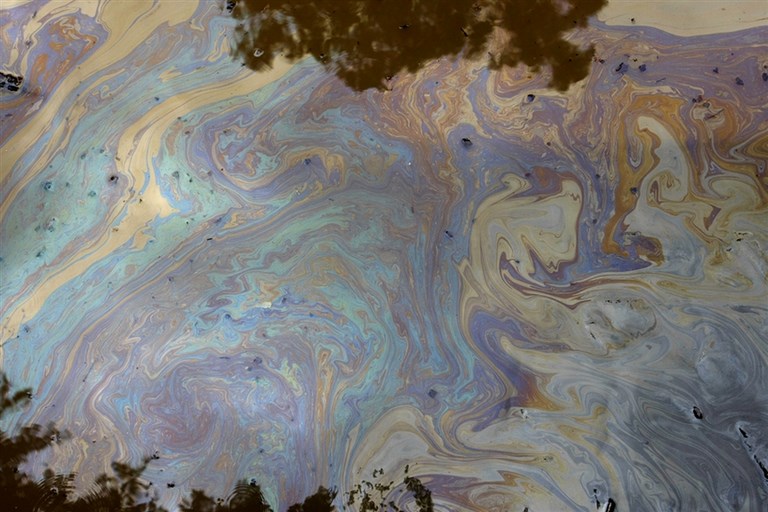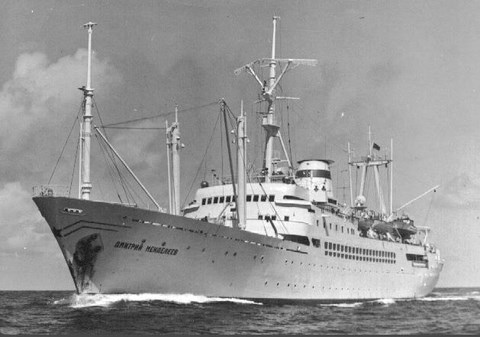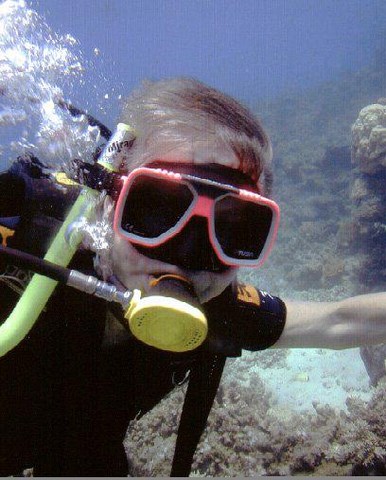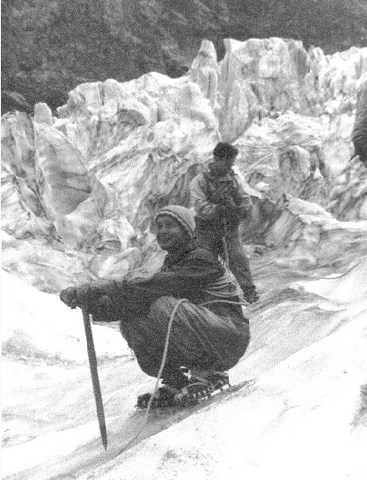Vladimir Pudov:
How does Pollution of the World Ocean contribute to the "Greenhouse Effect?"

Oil-slick near Brisbane, Australia, earlier this year
Over the last decades, the problem of global warming has become ever more urgent. Some scientists contend that we are dealing with a naturally fluctuating climatic process. Over the past century, the mean annual global temperature increased by only 0.50 – 0.80C. Such a growth is well within the limits of natural temperature variations. Others, and they are in the majority, are of the opinion that the recent rapid temperature increase is caused by atmospheric pollution and an increase in the so-called "greenhouse effect."
The greenhouse effect is the absorption by the atmosphere of the long-wave radiation (simply stated, the infrared radiation of heat within the range of 4 to 100 micrometers) emitted by the surface of our Planet (land and oceans) when it is heated by the Sun. Just as in a greenhouse, the air is heated and sends back part of the long-wave radiation to Earth, while the other part escapes into space. Through this process, the temperature on the Earth's surface becomes higher than it would otherwise be, without these "greenhouse" gases playing the role of a greenhouse film, or glass, in the atmosphere of the planets. Such gases are: carbon dioxide (CO2), methane (CH4), nitrogen monoxide (N20), etc. But the main components of the atmosphere contributing to the greenhouse effect are CO2 and water vapor. The presence of these gases in the atmosphere produces the effect of a warm blanket and makes possible the conservation of heat near the Earth's surface. The greenhouse effect has existed on Earth practically at all times. It is because of this very effect that we live in such comfortable, greenhouse conditions. Without it, the oceans would be frozen and life such as we know it would not have been possible.
But the excessive burning of fossil fuel and forest fires increase the abundance of carbon dioxide in the atmosphere. The concentration of CO2 in the Earth's atmosphere is at present the highest it has been in the past 650 thousand years, according to scientists who studied samples of Antarctic ice taken from a depth of three kilometers. The age of the samples reaches to about 900 thousand years. The ice contains air bubbles. The analysis of the gas composition of these bubbles yields information about the concentration of different gases in the atmosphere and about the temperature of the environment in the corresponding life periods of our Planet. It has been found that the concentration of carbon dioxide is now 30% higher than in any time-period studied and the concentration of methane is 130% higher. Moreover, "the rate of increase of carbon dioxide concentration during the past 50 years is 250 times higher than is has been for any 50 year-period during the last 650 thousand years", says Dr. Thomas Stocker from Bern University in Switzerland. The rate of increase of carbon dioxide in the Earth's atmosphere can upset the atmospheric equilibrium of our Planet and cause a global warming of the climate with unpredictable consequences.
This problem has disquieted many. It has become serious enough for the international community to accept, as far back as 1997, the so-called Kyoto Protocol. And it has been only eight years now (we are writing in 2013) that Russia ratified the Kyoto Protocol and that the International Agreement regulating the release of greenhouse gases into the atmosphere was enforced, on February 16, 2005. The World has succeeded in bringing about the first International Agreement on the Protection of the Earth's atmosphere.
The U.S.A., Australia, China, India and some other countries refused to sign the Kyoto Protocol, though in the volume of carbon dioxide released, the U.S.A. (1572.6 thousand tons per year) and China (948 thousand tons per year) are the world champions and are significantly ahead of Russia (420 thousand tons per year). These countries went another way, strategically more reasonable. While agreeing with the ideas of the Kyoto Protocol, they have chosen to increase efforts and means for developing new technologies and ecologically safe industrial productions. In the nearest future the other countries, Russia among them, will have to introduce state-of-the-art, ecologically safe industrial processes by buying, instead of pollution quotas, new technologies from the U.S.A. or China.
The signing of an International Agreement to reduce industrial, transport and other carbon dioxide releases into the atmosphere can only be praised. As a great surprise in this document comes the neglect of the pollution of the World Ocean by different surface-active agents (surfactants), in particular, by oil products. Yet, the World Ocean represents 71% of the surface of our Planet. Such disregard is likely connected with the mistaken belief that the forests – the lungs of our Planet – play the main role in absorbing carbon dioxide. But this function of forests is greatly overestimated in text-books. Almost all the CO2 absorbed by the forests from the atmosphere during photosynthesis returns there through breathing, vegetal decaying and forest fires. The difference between the release of CO2 by the forests is of a level tens of times lower than that of modern, anthropogenic exhausts into the atmosphere.
The greenhouse effect exists not only on Earth. The most significant greenhouse effect exists on our neighboring planet – Venus. The atmosphere of this planet consists almost entirely of carbon dioxide. As a result, the planet's surface is heated up to a temperature of 4700C. Earth escaped such a fate only because of the existence of its oceans. The oceans absorb atmospheric carbon dioxide and through this process, excessive amounts of it are removed from the atmosphere. On Venus there are no oceans, and all the carbon dioxide released into the atmosphere by volcanoes remains there, which results in such a pronounced greenhouse effect on Venus.
Pollution of the World Ocean
According to the estimates made by some experts, 10 – 12 million tons of oil and oil products spill annually into the World Ocean. About 35% of them seem to be due to oil production and transportation (oil pipelines and accidents with bulk-oil tankers). Little wonder! It suffices to have a look at the map schowing the concentration of oil derricks, and oil and gas pipelines be it only in the Gulf of Mexico. (The map is taken from a special issue of the American journal National Geographic describing the consequences of hurricane "Katrina" in New Orleans.)
Vladimir Pudov, biography

Vladimir Pudov was born in 1937 in the region of Kirov. He studied at the Ural Polytechnic Institute in Sverdlovsk (Yekaterinburg) and earned a PhD in physico-mathematical sciences. He studied at the Faculty of Radio Engineering, specializing in "Automation, Remote Control and Computer Science." He was then employed in the development of radar systems for long-distance target detection.
In 1966, he won a competition for a post on the new research vessel "Akademik Kurchatov" of the Institute of Oceanology of the USSR, and took part in two major expeditions. In early 1969, he was promoted to the position of chief-engineer of the new research vessel "Dmitry Mendeleev", where he worked until 1973, participating in seven major expeditions, including a seven-month expedition, "Polygon-70," in the tropical Atlantic Ocean.

After 1973, he worked at the Institute of Experimental Meteorology (IEM) of the USSR State Committee for Hydrometeorology in the "science city" of Obninsk, near Moscow, doing research on typhoons, particularly on the interactions between typhoons and the ocean.
During his time at the IEM, he was closely involved in the organization of more than a dozen oceanographic expeditions in the north-western part of the Pacific Ocean - the area of typhoons. He took part in these expeditions in various capacities - from head of a unit to head of expeditions. He was deputy-chief of the international expedition "Typhoon-90," up to then the largest international expedition for the study of typhoons.
Beginning in 1991, he participated in various international symposia, conferences and congresses on the problems of the physics of the ocean and of the atmosphere. In particular, he presented papers at conferences of the American Meteorological Society (1991, 1994), at the conference "Tropical Cyclone Disaster (DSD` 92) "in Beijing (1992), at the XXI General Assembly on the Physics of the Ocean in Honolulu (United States, 1995).
In 1993, in co-authorship with Greg Holland, he published a book in Australia: "Interaction of Typhoons with the Ocean: the Results of Experimental Research."
In 1998, at the suggestion of Sir James Lighthill (Chairman of the Board of the International Union of Scientists - ICSU), he was included as an expert in the International Working Group on Tropical Cyclones (IWTC). He participated in the IWTC-IV in Haikou, island of Hainan (China).
In 1998, he spent two months at the invitation of the University of Rhode Island (USA) working at the research center there on the issue of the ocean response to the impact of typhoons.
In 2002 he took part in the IWTC-V at Cairns (Australia).
In April 2004, he was invitated to participate in the 21st International Congress of Theoretical and Applied Mechanics.
In 2007, he participated in the popular science film "How to stop a hurricane" which was released in Canada.
In 2007, he transferred to the Russian Federal Information Analysis Center SPA "Typhoon".
Over the course of his career, Vladimir Dmitrievich Pudov has published over 120 scientific papers in Soviet, Russian and foreign publications. He also published in popular science magazines such as "Chemistry and Life", "Business Journal of Ecology", the newspaper "Search."
In 2010, he published a biographical essay: "Impressions of a life lived."
His hobbies: collecting sea shells, mountain climbing and skiing. His sea shell collection has been exhibited in three museums in Russia. Now retired, he is active in the protection of forests in the Kaluga Region.

Vladimir Pudov in the Tian-Shan...
...on Ullu Tau (Mt. Elbruz)...

...and on the Great Barrier Reef
A team of MIT scientists(...) led by professor Kerry Emanuel, (...) are hoping that by applying a chemical coat one molecule thick to the ocean's surface, they can retard the natural heat-transfer process that occurs during evaporation, which would slow the storm (...). Vladimir Pudov, a leading weather-modification scientist from Russia [who] has expressed interest in joining forces with MIT. According to the recently declassified results of Soviet experiments during the 1980s, Pudov made significant progress in evaporation supression in the South Pacific.
Rather than coating the ocean surface, Pudov sought a substance that would dissolve in it - and he claims to have developed the ideal compound: a low-cost, ecologically safe, fine white powder called carmidol. "Carmidol suppresses evaporation by no less than 65 percent," he says. "This leads to a decrease of water-air temperature difference and a decrease of the energy flow into the hurricane."
While Alamaro is guarded in his optimism about Pudov's claims, he's excited about the prospect of working with someone committed enough to navigate a ship into a tropical cyclone for the sake of research. "He is a brave man. He gathered crucial data on a storm's thermodynamics and physics, and on ocean spray," says Alamaro of Pudov's trip to the Sulawesi Sea..."
Tom Standage, Wired.
Contact: p u d o v @ b k . r u



